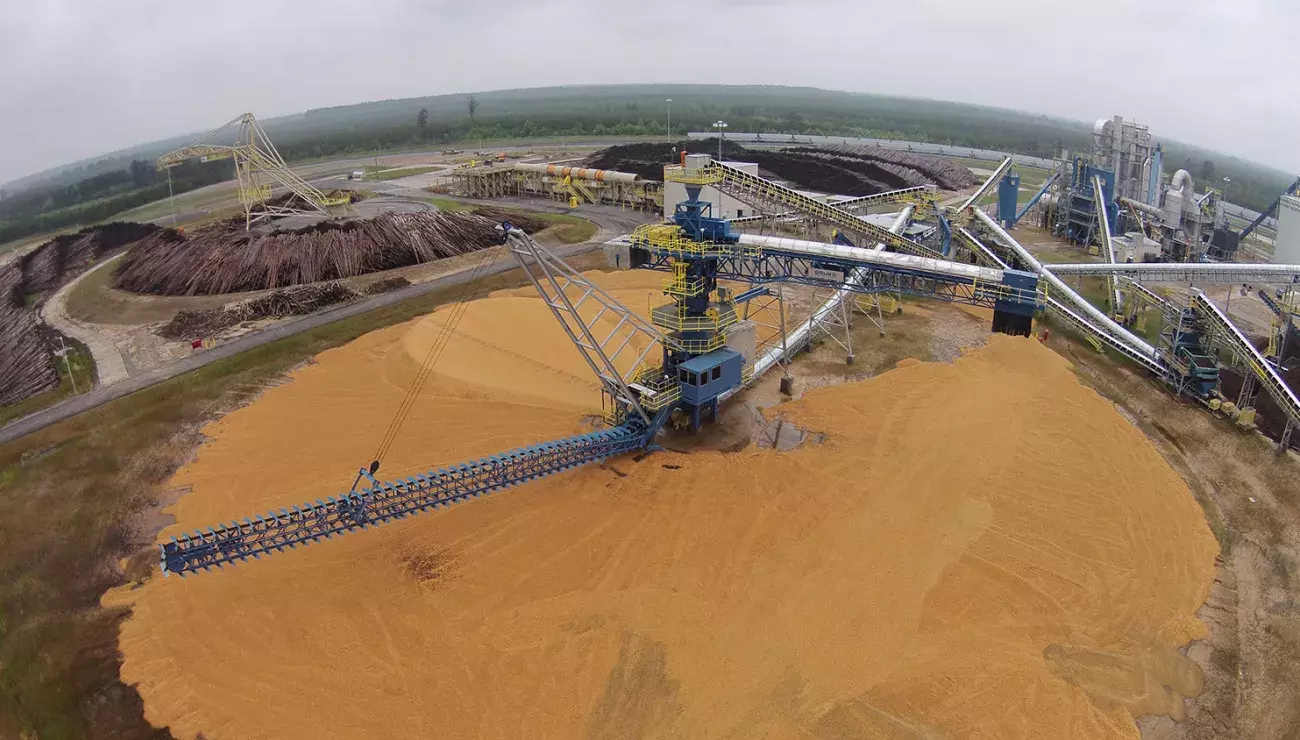
Booming e-commerce demands optimized wood-processing supply chains
19 Jun 2020Many sectors are in the doldrums due to the Covid-19 pandemic, but for those companies managing to keep their doors open, the e-commerce market is booming, thanks to those forced to stay at home and order many of their supplies online. This has led to a massive global increase in the need for cardboard and other wood-derived forms of packaging.
The effect of this has recently been noted at the US Port of Savannah, Georgia, where, even as early as February, there was a marked rise in the handling of wood products.
Although the change could be attributed to growth in wood pulp – which has increased by 25.5 percent year-on-year and paper and paperboard by 21.7 percent – over the course of the first two months of 2020, Savannah handled 78,486 twenty-foot equivalent units (TEUs) of containerized forest products; an increase of six percent over the same two months in 2019.
Setting industry standards
Such a demand spike in the handling of these wood-based materials, so early into the onset of the pandemic, speaks volumes – literally. So how have companies met the surge? The explanation is, in part, straightforward – automation.
“Increased automation across all industries is becoming the new norm,” says Bruks Siwertell Sales and Marketing Senior Vice President, Ken Upchurch. “The pulp and paper industry have been using fully automated wood yards for decades and through the years of experience gained from supporting these customers, we have developed wood yard systems that utilize the best available technology for the wood pellet industry as well.”
Wood-processing facilities are, in fact, leading many other industries in terms of the extent of automation in their production chains. A notable example of a US industrial-scale, fully automated wood chip facility is Green Circle Bio Energy Inc in Cottondale, Florida. It began operations in 2008 and is now owned by Enviva Biomass. Since it began operations, the facility has gone from an annual green wood chip processing capacity of 500,000 metric tons to three million. This growth has been supported by a broad range of fully automated Bruks equipment.
“The wood yard, supplied by Bruks Siwertell, has proven to be a very reliable element of the Cottondale process,” continues Mr Upchurch. “In fact, it is now seen as the industry model for high-volume wood processing.”
Managing the circular giants
Bruks equipment at Cottondale includes a large circular blending bed stacker reclaimer (CBBSR). Huge wood chip piles are built continuously in a 360-degree rotational pattern, where successive layers of material are laid down using a stacking conveyor that pivots through a complete circle as the pile grows.
The reclaim bridge is located at ground level and moves into the pile as it reclaims. At the same time, a harrow agitates the reclaiming face of the pile, fluidizing the material, which is caught by a large diameter screw. It transfers the wood chips to the central area, where it drops through a conical chute onto the reclaim belt. This belt passes under the pile and emerges beyond the edge, maintaining the circular base of the pile without interruption.
The automated technology offered by the CBBSR enables the oldest materials to be reclaimed first, ensuring consistent quality throughout, and excellent performance at the plant.
Technological progression
“Wood yard automation has been used for many years, but new advances in technology have made them even more reliable with higher capacities,” explains Mr Upchurch. “Automation has also improved safety and environmental aspects during the same timeframe.”
In addition to wood yards, Bruks Siwertell offers a range of dry bulk handling and wood-processing machinery that has set industry standards. All are geared towards efficient handling, the elimination of material degradation and waste, and the reduction of environmental impact.
One of its latest products is The Belt Conveyor™, which is a pioneering new conveying system that has eliminated the use of traditional idlers under the belt, and instead employs a pressurized air cushion. For biomass – an alternative fuel now displacing coal at many power plants – it is a game-changer, eliminating dust emissions, conserving pellet quality and doing away with the extensive, costly maintenance demands of idler belt conveyors.
“New designs like the The Belt Conveyor and the latest CBBSRs incorporate advancements in mechanical and electrical designs and are being used to improve operations for essential service suppliers,” he concludes.
Sustainability focus
Wood processing is one of the rare examples of a bulk material production and handling chain in which almost everything can be recycled, and is arguably a good candidate to reduce humanity’s reliance on non-renewable fossil fuels. Packaging materials can be recycled and reused as well.
We believe that even the smallest progression towards reducing environmental impact and waste can be regarded as a direct contributor to a more sustainable future; but with the help of Bruks Siwertell, Enviva Biomass and many other companies like it are taking much larger steps.
For more information, please send an email to sales@bruks.com
 Bruks-Siwertell
Bruks-Siwertell